Unveiling the Stars: Thank You for Your Insights on the SV550 Telescope!
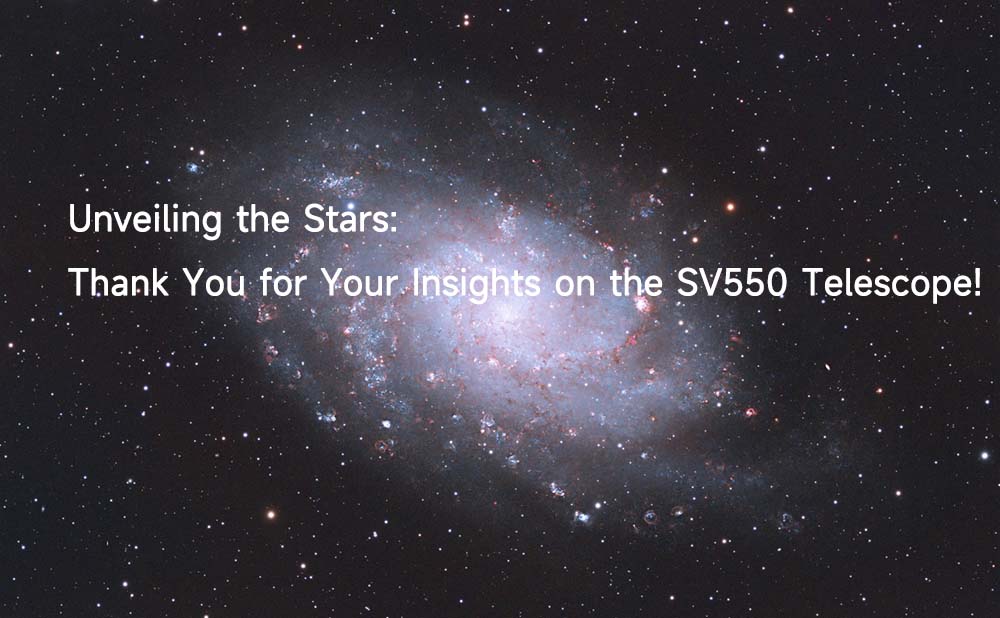
Unveiling the Stars: Thank You for Your Insights on the SV550 Telescope!
This blog is a real review shared by Pavel Lafata. Pavel Lafata is a very experienced astronomy enthusiast. Thank you very much for sharing your experience with the SV550 telescope. Customer feedback is very valuable to us, and we sincerely appreciate your time and effort to provide insights. Your comments help us understand what works well and what can be further improved. Your passion for astronomy inspires us to continue to innovate and provide excellent products!
Hello everyone,
My name is Pavel, and I live in a family house in a suburban part of hundred thousand city of Ceske Budejovice in South Bohemia, Czech Republic, Europe. I have been doing astrophotography for almost 2 years from my backyard, which is mostly Bortle 6 area. I have multiple different telescopes, both reflector and refractor types, mounts, cameras and other equipment. Almost a half year ago I decided to buy SVbony SV550 122mm triplet APO, I bought a bundle including a telescope, 0.8x flattener/reducer, dew heater band, handle, and carrying case. I also ordered an SV209 1.0x flattener extra. Now, after taking several photos and using the telescope for a while, I would like to share my opinion on it and give you some idea about the scope and its pros and cons.
Product Description of SV550 APO:
First, SV550 mechanical parts, materials and overall quality of manufacturing and machining. Compared to TS-Optics scopes and Sky Watcher scopes I have; I must admit that the quality of SVbony products is fairly above the standards. All mechanical parts of the scope are carefully machined, the assembly of the scope is very good, the retractable dew shield fits very well. The most critical mechanical part of the telescope is of course a focuser, which is a 2.5" rack-and-pinion, 1:10 dual speed focuser. Its quality is very good, compared to other scopes I have is for sure excellent. The focuser goes smoothly, precisely and due to the rack-and-pinion construction, you can use quite heavy photography equipment, including flattener, filter drawer or wheel, OAG, camera, etc. As you can see from the photo below, I attached a QHYCCD high-precision EAF to the focuser. This was pretty easy, you just dismount either dual-speed or single-speed focuser knob according to your EAF (QHYCCD high-precision EAF uses dual-speed side) and using some adapters, plates and screws that comes usually together with EAF you attach it to the focuser.
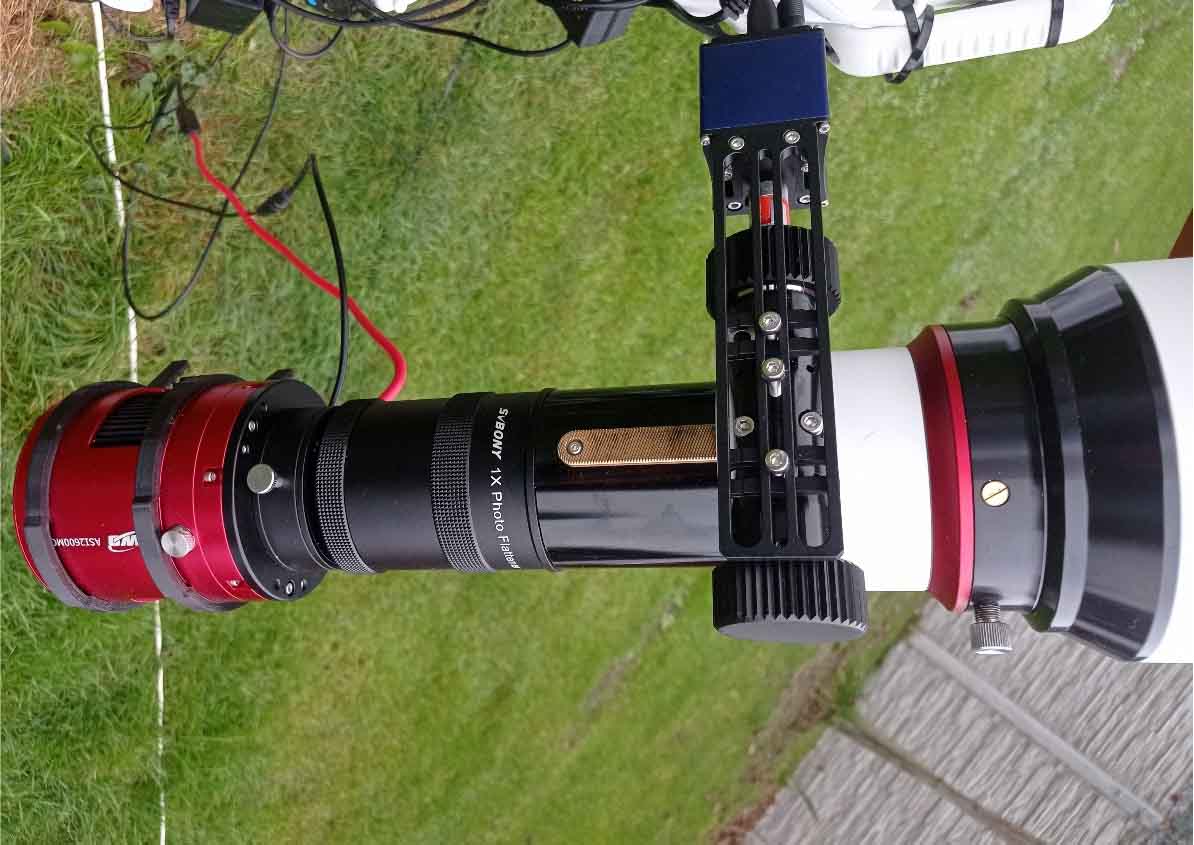
To attach the SV209 either 0.8x flattener/reducer or 1.0x flattener, you just need to remove the locking adapter at the end of the focuser tube, and you simply screw the flattener to the focuser as both have M63 threads. The flatteners have M48 thread towards the camera and standard backfocus of 55 mm. So you can simply attach your filter drawer, filter wheel, OAG, tilt adapter, etc. and of course additional tubes to reach the correct backfocus towards your camera. Compared to cheaper SVbony SV503 doublet telescope, where you just simply insert and lock the flattener inside the focuser tube, here in case SV550 APO everything is screwed tightly together making the whole optical train much more stable and reliable.
Improvement Suggestions:
Just a side note about the filter drawer/wheel here. As you can see from the photo, I use a filter drawer with a single filter, mostly one of the anti-light pollution (narrowband) filters I have. And as you can see, I use ZWO ASI2600MC Duo camera with APS-C size sensor and a second guiding sensor implemented in the camera as well. This camera, as well as some other APS-C size DSO cameras and most Fullframe cameras, has an external thread M54 instead of M42, which are usually used for smaller sensor cameras (including SVbony SV605 and SV405 cameras). Unfortunately, the filter drawer you can buy from SVbony as well as SVbony filter wheel have fixed M48-M42 threads, so if you want to attach a DSO camera with different thread, you need to buy an adapter for that. Due to that I bought a filter drawer from different brand, which has exchangeable threads on both of its sides, including M42, M48 and M54 threads. Due to that I think it would be perfect if SVbony includes also some adapters together with their filter drawer and filter wheel or makes their filter drawer with exchangeable threads to match specific cameras and situations. (On the other hand, I also own 2 SVbony filter drawers as well, and they are perfect for their price).
Another small mechanical improvement that could be perhaps included in SV550 APO telescope would be adding the degree markings on the focuser tube. Sometimes when planning your framing you just need to rotate your camera and if you do not have any electronic rotator (I have never had any), you just manually rotate either your focuser tube or even the whole telescope using its circles. After that I always check in NINA by using platesolving and rotation resolving to check the rotation of my camera. It is simply enough, but on the other hand, if there are degree markings on the focuser, you would probably have better idea about how many degrees you need to rotate it to achieve desired angle.
As for the rest of the mechanical parts of the telescope, I really like hexagonal holding circles, which are really solid and containing holes to attach various equipment. The circles are equipped with nice locking knobs. I really like the hand, which you can buy in a bundle together with the scope. It is very convenient that you can simply grab the scope and go, plus you can use handle to mount an ASIAIR or a finder scope, the handle has a lot of holes prepared for that.
The last minor improvement, which I would recommend considering, is replacing the dovetail bar. The telescope comes with standard vixen style dovetail bar, which is good and is somewhat sufficient. However, I better replaced it with a wider losmandy style dovetail, which in my opinion provides better stability of the whole telescope. In my opinion, SVbony could perhaps include this type of dovetail bar in some of their telescope bundles.
Product Application of SV550 APO:
Here you can see a photo of my complete setup mounted on Sky Watcher EQ6-R Pro mount as well as on Juwei17 strain wave gear mount.
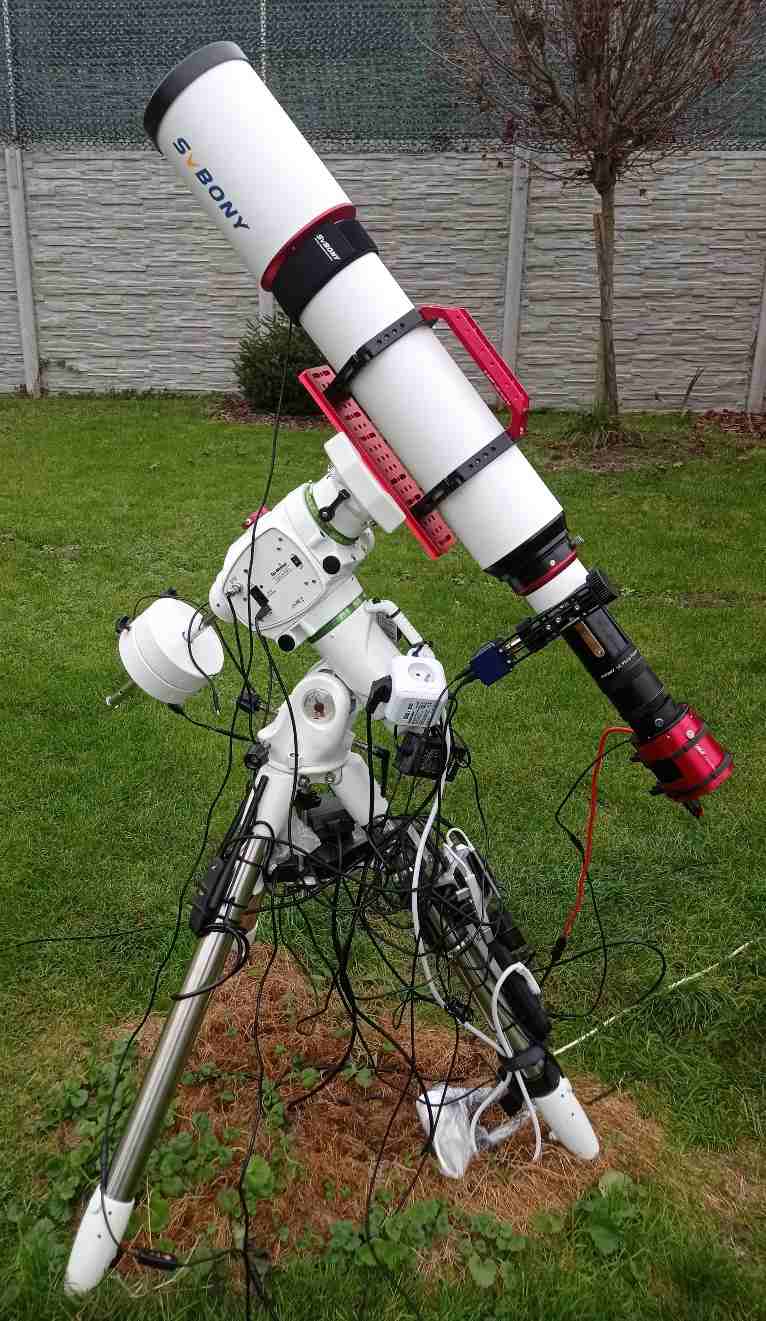
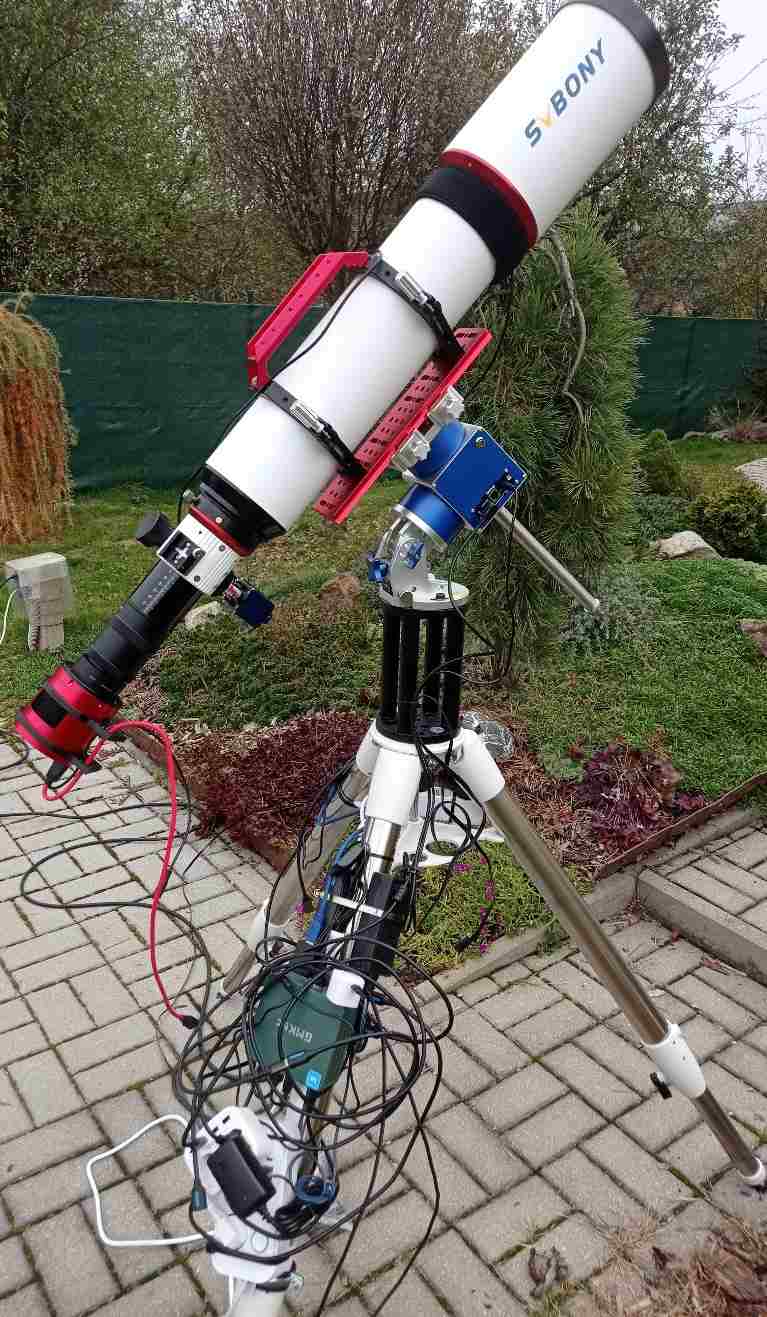
Please, excuse my terrible and messy cable management. I have multiple telescopes, and I often switch between them. Moreover, as I often mount and unmount scopes during bad weather days here during autumn and winter season, I decided to attach my mini PC, all necessary power sources, cables, etc. on the tripod of the mount rather than on the scope. Due to that I can quickly unplug all the cables and unmount the scope or mount it back again and plug the cables only.
As for the mounts, I mostly use my SV550 setup mounted on Sky Watcher EQ6-R Pro mount. My full SV550 setup with all the equipment is about 110 cm long and weights around 7.9 kg (17.4 lb), which is not that much and I think Sky Watcher HEQ5 mount type or similar should be able to handle it. But EQ6-R Pro or similar heavy EQ mount or any strain wave gear mount, such as ZWO AM3, AM5, UMi 17, iOptron and Sky Watcher harmonic mounts, etc., manage the scope easily also in nonideal weather conditions, such as during windy nights, etc. Under my Bortle 6 skies during a night with a good seeing, I can get guiding RMS between 0.3"- 0.4" with EQ6-R Pro mount and guiding camera 2600MC Duo, but it can rise between 0.5"- 0.7" when seeing conditions are not very good.
Ok, so that is all for the mechanical part and now as for the optics itself.
The SV550 scope is an air-spaced APO triplet using FPL-51 glasses. Thanks to that, the chromatic aberration should be minimal compared to achromatic refractors and doublet refractors, thus the APO produces crispier and more contrast images. Using cheaper FPL-51 glasses compared to FPL-53 glasses means that there is sometimes very minor aberration especially in case of stars at the edges of the field and during the worse seeing conditions and when using 0.8x flattener/reducer, but this aberration is mostly unnoticeable and can be easily corrected during processing of photos in a software such as Pixinsight and similar. The optics is fully multicoated, therefore any reflections should be also minimal. The large 122mm aperture provides excellent light gathering capacity and resolution on a lot of DSO objects. Since f-ratio of the scope is f/7, the native focal length with the SV209 1.0x flattener is 854 mm, while the focal length with SV209 0.8x flattener/reducer is approx. 683 mm, making the scope optics “faster” at f/5.6 ratio. The SV209 1.0x flattener uses 2 glass elements and is lighter compared to 0.8x flattener/reducer, which contains 3 glass elements. I bought and tested both flatteners and both have their pros/cons. While 0.8x one makes the telescope “faster” in light-gathering and gives you a bit wider field of view with the same camera, the 1.0x has almost no aberration and also no vignetting when using APS-C camera sensor and giving you a bit higher overall magnification, which comes handy when shooting small targets, like most of the galaxies, star clusters, etc. Personally, I like and use them both, for example I used 0.8x to shoot the Easter Veil Nebula (NGC 6992), while I used 1.0x one to shoot the Triangulum galaxy (M33). The slight vignetting in the corners (see left corners below) of the frames when using 0.8x flattener/reducer and APS-C size sensor (like mine 2600MC Duo) compared to no vignetting of the same camera sensor when using 1.0x flattener can be seen in the picture below, which is a master flat frames stack.


Of course, the vignetting can be easily eliminated by using calibration with flat frames during stacking of the final image. Both flatteners do their job very well and they provide sharp, pin-point stars all over the field. Of course, this also depends on seeing conditions as well as guiding RMS. Here is an example of star aberration and eccentricity analysis of an image shot using 1.0x flattener.
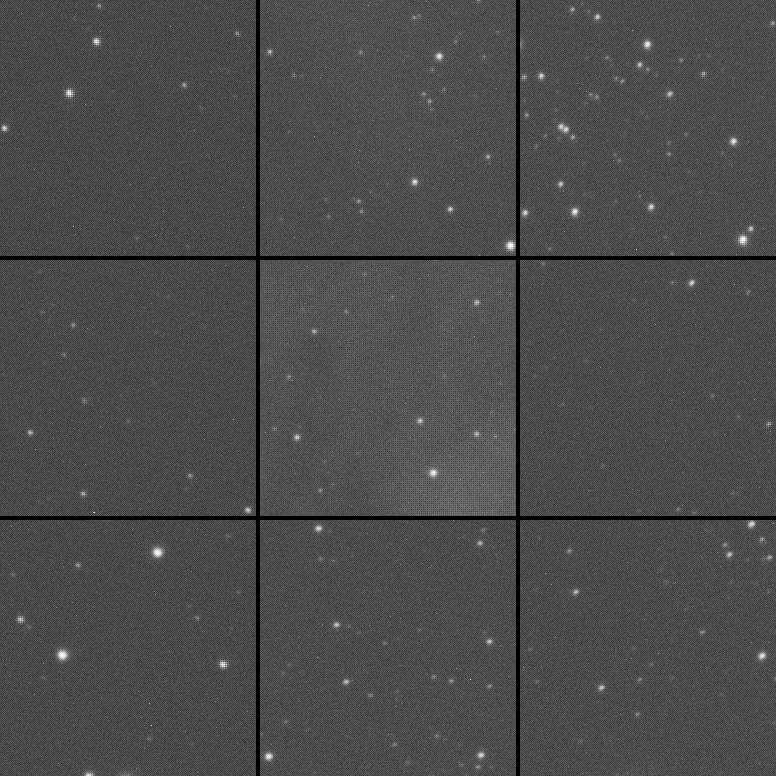
When I unboxed the scope and before I took some first light with it, I also checked its collimation. Compared with the collimation process of reflector type scopes, collimation of a refractor is much easier. First, you need a collimation cup, which you can for example 3D print and which is basically a simple cup of your telescope, but with a small hole exactly centered in the center of your lenses. Or you can just simply put a white sheet of paper in front of your telescope and make a narrow hole right in the middle spot of your lens. Then you just insert a laser collimator into the focuser tube of the scope and by rotating it, the laser beam should exit the scope right through the central hole, the focuser tube should be then aligned with the optics of the scope. Although my telescope travelled from China to central Europe, the collimation of the scope was almost perfect. I did only some minor adjustments of collimation screws.
Finally, a few notes about the filters I use with this scope. As I live and shoot at Bortle 6 area and I use OSC (color) camera, using anti-light pollution filters is necessary in my case. I have a variety of filters, which I change according to my shooting target. All my filters are 2" mounted filters. In case of shooting emission nebulas, I use mostly SVbony SV220 dual narrowband filter or Antlia Triband RGB Ultra filter, while I use NIR band containing filters, such as Antlia Quadband filter, SVbony SV240 filter or Optolong L-Quad Enhance filter, for shooting richer star fields, star clusters and also reflection type nebulas. All these filters suit very well with the scope. Sometimes, based on the seeing conditions, some of the filters produce smaller or larger hallos around bright stars, however, this is a feature of specific filter.
Conclusion
in my opinion and based on my experience with the scope and some other scopes of different brands, I find SVbony SV550 122mm APO as an excellent value-price solution. For your money, you will receive a very well manufactured and solid APO telescope with excellent mechanical machine as well as optics. The large aperture of 122mm provides high light-gathering capacity and resolution, both focal lengths options, 683 and 854 mm, using two potential SVbony flatteners, are optimal for most of the DSO targets. I recommend buying some of the telescope bundles, including at least a flattener/reducer, and eventually an SVbony dew heater band, a handle, a filter drawer and a guide scope, if you already do not have any. I must admit I am very satisfied and pleased with the scope and shooting with the scope is very easy and gives nice photos. Clear skies to all!
In the end, I would like to share at least 2 of my astrophotos, which were obtained by SVbony SV550 122mm APO scope, both flatteners, ASI2600MC Duo camera and SV220 and Antlia Triband RGB filter, EQ6-R Pro mount.
The first one is NGC6692, shot using SV209 0.8x flattener/reducer, SV220 filter, total integration time is approx. 8 hours:

The second one is M33 Triangulum galaxy, shot using SV209 1.0x flattener, Antlia Triband RGB filter, total integration time is approx. 16 hours:
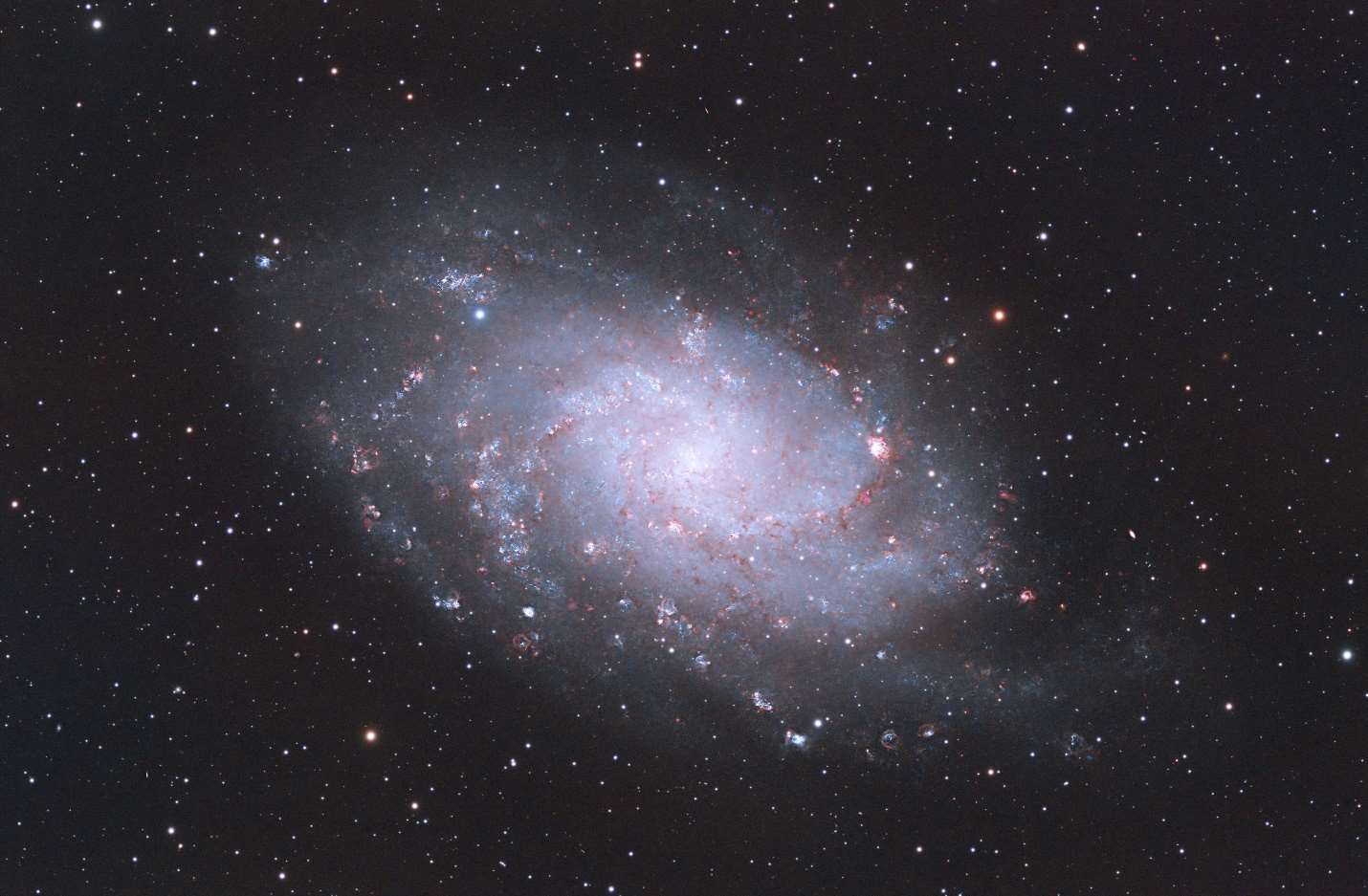
Note: The above text and pictures are all from Pavel Lafata. Please do not use without permission.
As we continue to enhance our products and services, your feedback remains a vital part of our journey. We sincerely appreciate the time you've taken to share your experiences with the SV550 telescope. Your insights not only help us improve but also guide fellow astronomy enthusiasts in making informed decisions.
We look forward to hearing more from you and supporting your astronomical adventures! Happy stargazing!








